Morning Eye Candy: Queen’s Return
Posted in Around the Garden, Photography on July 15 2013, by Matt Newman
Hi there, Monday.
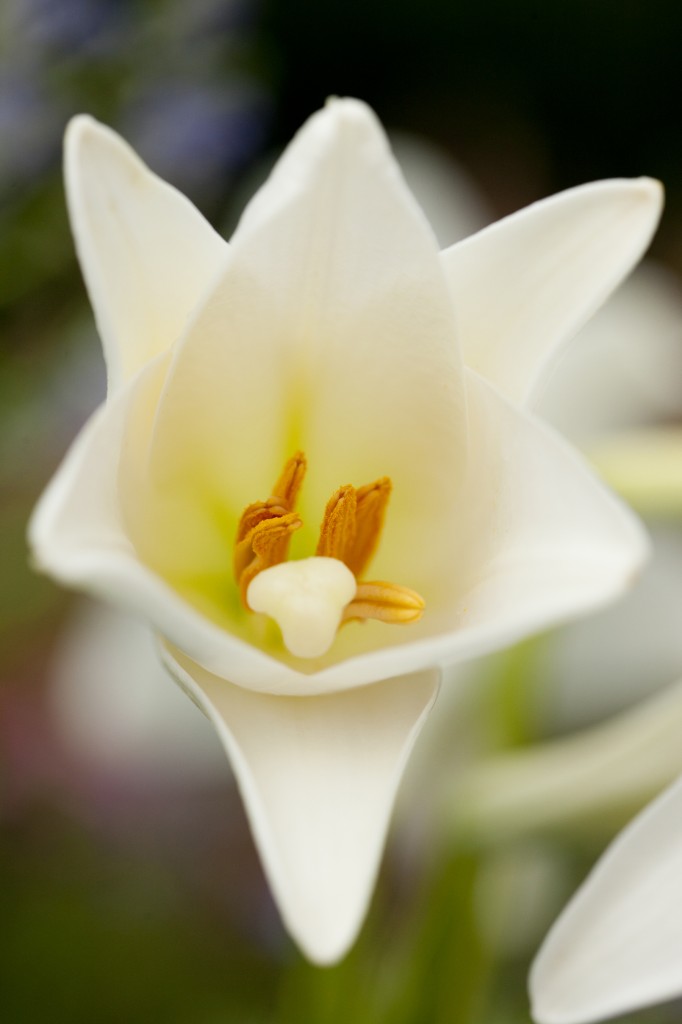
Lilium longiflorum ‘Snow Queen’ — Photo by Ivo M. Vermeulen

Inside The New York Botanical Garden
Posted in Around the Garden, Photography on July 15 2013, by Matt Newman
Hi there, Monday.

Lilium longiflorum ‘Snow Queen’ — Photo by Ivo M. Vermeulen
Posted in Around the Garden, Photography on July 14 2013, by Matt Newman
To see the Native Plant Garden in its current state is a joy. It wasn’t so long ago that it sat shy behind a fence as workers scurried about, planting thousands upon thousands of young plants. You can’t miss it now.
Photo by Ivo M. Vermeulen
Posted in Around the Garden, Photography on July 13 2013, by Matt Newman
Hey, keep it cool today. But do it in as tropical a manner as possible. Straw hats, cocktail umbrellas—whatever works.
Aphelandra sp. — Photo by Ivo M. Vermeulen
Posted in Around the Garden, Photography on July 12 2013, by Matt Newman

Juanulloa mexicana — Photo by Ivo M. Vermeulen
Posted in Around the Garden, Gardens and Collections, What's Beautiful Now on July 11 2013, by Joyce Newman
Joyce H. Newman holds a Certificate in Horticulture from The New York Botanical Garden and has been a Tour Guide for over seven years. She is the former editor of Consumer Reports GreenerChoices.org.
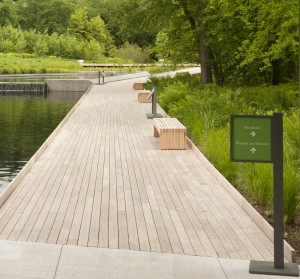 The Native Plant Garden‘s entrance decking, promenade, and benches are all made with lumber from native, sustainably harvested black locust trees (Robinia pseudoacacia)—a wonderfully durable, rot-resistant hardwood species with a long and colorful history.
The Native Plant Garden‘s entrance decking, promenade, and benches are all made with lumber from native, sustainably harvested black locust trees (Robinia pseudoacacia)—a wonderfully durable, rot-resistant hardwood species with a long and colorful history.
Native Americans in Virginia made bows from black locust and are believed to have planted the trees moving eastward from the Southern Appalachians. Colonists at Jamestown reportedly used the trees to build corner posts for their first homes. The wood was also used by pioneers for fence posts, ship masts, and for pegs—called trunnels—in ship building.
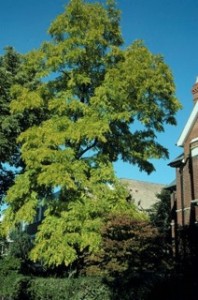
When wet, the wood expands and becomes leak proof. So the ship trunnels were so strong that they lasted even longer than the ship hulls. According to naturalist Donald Peattie, after the War of 1812, the British claimed that they were defeated on Lake Champlain because of the superiority of the Americans’ “locust fleet” built with the trunnels.
Black locust trees grow rapidly by sending out underground stems that send up new shoots to form new trees. For this reason some considered them to be invasive or at best a nuisance. Because the tree spreads naturally, it is usually found in groves and these can be managed sustainably. For outdoor projects in the New York metro area, some progressive landscape architects seem to be using it more frequently as an alternative to tropical hardwoods.
Posted in Around the Garden, Photography on July 11 2013, by Matt Newman
And now for something on the dusky end of the spectrum…
What? It can’t all be fire engine reds and neon yellows!
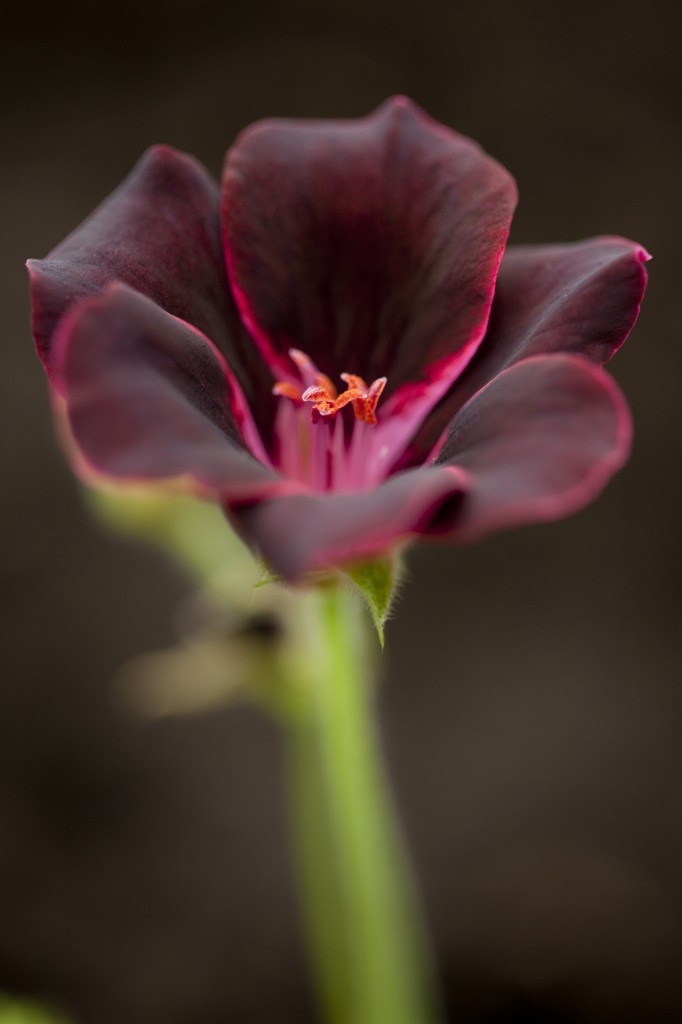
Pelargonium ‘Lord Bute’ — Photo by Ivo M. Vermeulen
Posted in Around the Garden, Photography on July 10 2013, by Matt Newman
Spot the noisy customer chatting away in the Perennial Garden. You won’t win a prize, sadly, but you’ll at least know who’s chirping tiny harrumphs at your intrusion when you visit.
Photo by Ivo M. Vermeulen
Posted in Around the Garden, Photography on July 9 2013, by Matt Newman
Photo by Ivo M. Vermeulen
Posted in Around the Garden, What's Beautiful Now, Wildlife on July 8 2013, by Joyce Newman
Joyce H. Newman holds a Certificate in Horticulture from The New York Botanical Garden and has been a Tour Guide for over seven years. She is the former editor of Consumer Reports GreenerChoices.org.
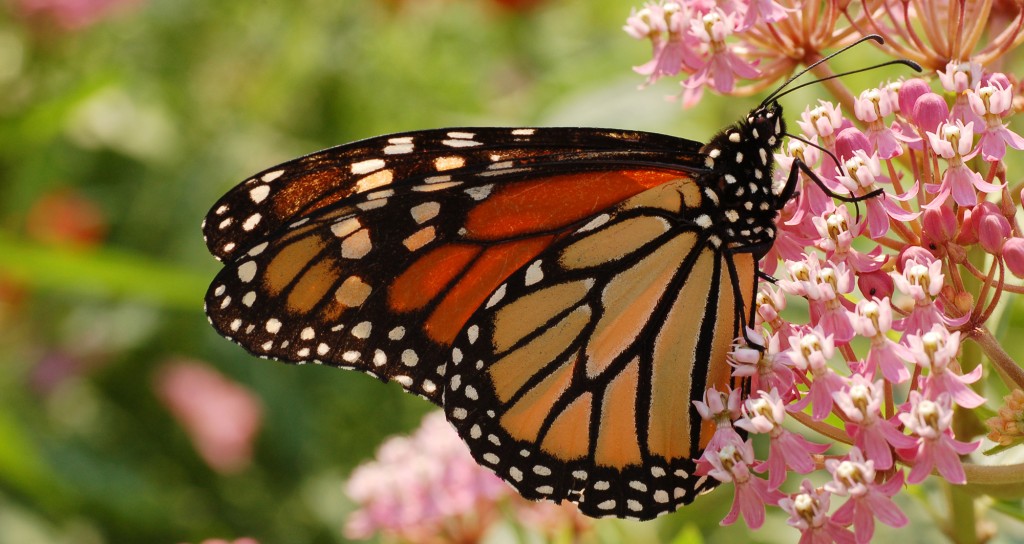
Monarch butterflies are among the most popular and prominent insects in the Native Plant Garden, easy to spot with their dramatically dark orange and black patterned wings. One reason for their high visibility and large numbers is actually their relationship with the tall milkweed plants, which are flowering now in the dry meadow. Without the milkweeds, we wouldn’t have the monarchs.
In fact, monarchs (Danaus plexippus) depend on milkweed throughout their entire life cycle—when they lay eggs and when their larvae, in caterpillar form, feed exclusively on milkweed.
Many different species of native milkweed provide nourishment for monarchs, including swamp milkweed, green, purple, redwing, whorled, and horney spider varieties. The dry meadow contains a total of more than 500 milkweed plants. Of these, by far the most numerous are the butterfly milkweed (Asclepias tuberosa).
Posted in Around the Garden, Photography on July 8 2013, by Matt Newman
I’ve kept up with this dahlia over the last while. It stands by its lonesome in the Perennial Garden, presiding like a lighthouse beacon over the flowers and foliage growing underneath. I’m a fan of its flamboyance.
Dahlia ‘Mystic Illusion’ — Photo by Ivo M. Vermeulen